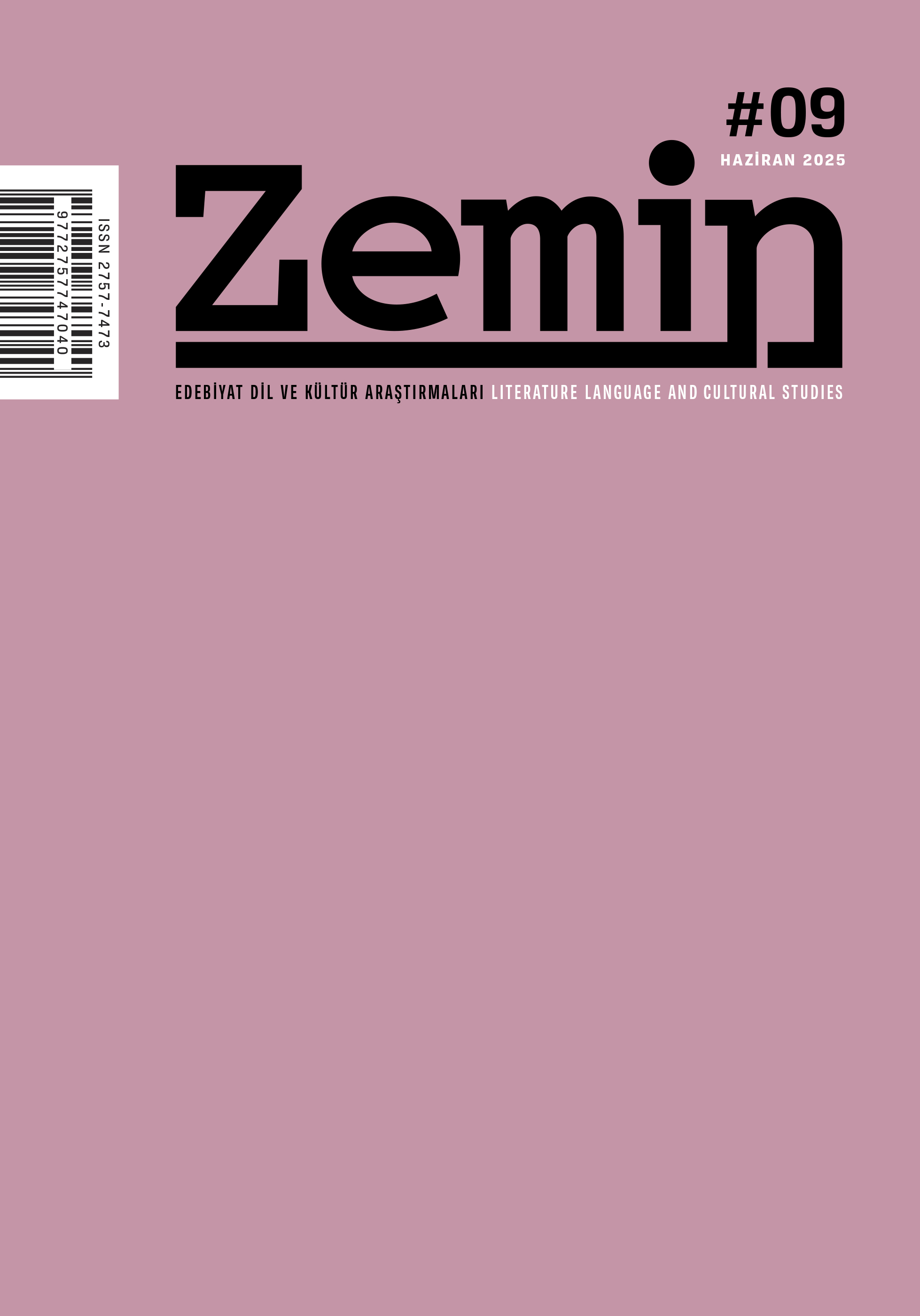A New Age Epic of Seyrānī
DOI:
https://doi.org/10.5281/zenodo.15658018Keywords:
Turkish Folk literature, cönk, 19th century, Seyrānī, age epic, yaşnāme, epicAbstract
The yaşnāme, one of the oldest genres in Turkish folk literature, traces its historical lineage back to the eleventh century. First exemplified by Hoca Aḥmed Yesevī (d. 1166), this genre was later adopted by ‘āşıḳ poets from the sixteenth century onward. Yaşnāmes typically narrate the human life cycle—beginning with conception and extending to approximately one hundred years of age—structuring each stage chronologically and characterizing it by distinct life phases. Commonly composed in syllabic meter and performed as destāns (epic poems), these texts are also known under various titles, including ‘ömür destānı (life epic), yaş türküsü (age song), ḥayāt destānı (life narrative), and vücūdnāme (book of the body). Seyrānī (d. 1866), one of the most prominent poets of nineteenth-century Turkish folk literature, left behind a prolific corpus in both syllabic and prosodic meters. Celebrated for his improvisational talent, Seyrānī earned widespread acclaim during his lifetime. Modern scholarship continues to engage with his work, particularly through cönks, miscellanies that preserved the verses of ‘āşıḳ poets, which remain vital sources for uncovering his lesser-known compositions. This study focuses on a newly discovered yaşnāme by Seyrānī, preserved in a cönk held in the Rare Books Collection of the Atatürk Library of the Istanbul Metropolitan Municipality (catalogue no. Bel_Yz_K0362). Through a close analysis of this previously unrecorded work, the study explores Seyrānī’s contributions to the yaşnāme tradition and his poetic persona as an ‘āşıḳ. The article begins with an overview of the genre and its defining features, followed by biographical notes on Seyrānī. The central section offers an in-depth analysis of the text in terms of language, style, structure, and thematic content. The study concludes with a transcription of the full text.
References
Albayrak, Nurettin. “Seyrânî.” TDVİA. c. 37. İstanbul: TDV, 2009, 37-38.
Artun, Erman. Âşıklık Geleneği ve Âşık Edebiyatı. Ankara: Akçağ, 2001.
Aydın, İbrahim Hakkı. “Kenz-i Mahfî.” TDVİA. c. 25. İstanbul: TDV, 2022.
Aydoğdu, Betül. “Türk Edebiyatında Seyrânî Olgusu: Develili Seyrânî ve Eserleri (İncelme-Metin).” Doktora Tezi. Erciyes Üniversitesi, 2011.
Canım, Rıdvan. “Edebiyatımızda Yaşnâmeler ve Yunus’ca Bir Yaşnâme.” Yunus Emre Sempozyumu, hazırlayanlar Hakan Yekbaş ve Mustafa Sefa Çakır, 39-49. Sivas: Sivas Cumhuriyet Üniversitesi, 2022.
Cönk, İBB Atatürk Kitaplığı-Nadir Eserler, Bel_Yz_K0362, yk. 45b-47b.
Çatak, Ali. Bütün Yönleriyle Seyrânî. İstanbul: Bayram Yayıncılık, 1992.
Çelebioğlu, Âmil. “Türk Edebiyatında Yaşnâmeler.” Türklük Araştırmaları Dergisi, s. 1 (1985): 151-286.
Çobanoğlu, Özkul. Âşık Tarzı Kültür Geleneği ve Destan Türü. Ankara: Akçağ, 2000.
Gedik, Nusret. Türk Edebiyatında Manzum Devriye. İstanbul: H Yayınları, 2018.
Gökyay, Orhan Şaik. “Cönk.” TDVİA. c. 8. İstanbul: TDV, 1992.
Günay, Umay. Âşık Tarzı Şiir Geleneği ve Rüya Motifi. Ankara: Akçağ, 2011.
İnal, İbnülemin Mahmut Kemal. “Seyrânî.” Son Asır Türk Şairleri, 1665-1668. c. 3. İstanbul: Dergâh, 1988.
Karahan, Abdülkadir. “Âşık Edebiyatı.” TDVİA. c. 3. İstanbul: TDV, 1991.
Kaya, Doğan. Yaşnâmeler. Ankara: Akçağ, 2004.
Oktay, Zeynep. “Vücud-nâme (Kaygusuz Abdal).” Türk Edebiyatı Eserler Sözlüğü. 2022. https://tees.yesevi.edu.tr/madde-detay/vucud-name-kaygusuz-abdal (erişim 7 Temmuz 2024).
Örnek, Sedat Veyis, Türk Halkbilimi. Ankara: Bilgesu, 2014.
Özdem, Rahime. “Kaygusuz Abdal’ın Vücud-nâme Adlı Eserinin Tasavvufi Tahlili.” Yüksek Lisans Tezi. Akdeniz Üniversitesi, 2018.
Öztoprak, Nihat. “Yaşnâme.” Türk Dünyası Edebiyat Kavramları ve Deyimleri Sözlüğü, 256-259. c. 6. Ankara: Atatürk Kültür Merkezi, 2006.
Pala, İskender. “Kırk.” TDVİA. c. 25. İstanbul 2022.
Schimmel, Annemarie. Sayıların Gizemi. Çeviren Mustafa Küpüşoğlu. İstanbul: Alfa, 2017.
Türkmen, Fikret. “Yazılı Kaynaklardaki (Cönklerdeki) Bektaşi Şairlerin Şiirlerinde Görülen Yeni Şekiller.” I. Türk Kültürü ve Hacı Bektaş Veli Sempozyumu Bildirileri, 339-355. Ankara: Gazi Üniversitesi Türk Kültürü ve Hacı Bektaş Veli Araştırma Merkezi, 1998.
Uluç, Tahir. İbn Arabi’de Sembolizm. İstanbul: İnsan, 2007.
[Ulusoy], Ahmet Hazım. Sânihât-ı Seyrânî: Anadolu Halk Şairlerinden Everekli Merhum Mehmed Seyrânî. İstanbul: Matbaa-i Millî, 1340 [1924].
Yalgın, Ali Rıza. “Halk Arasında Çocuk, Delikanlı ve İhtiyar.” Türk Folklor Araştırmaları Dergisi, s. 7 (1950): 104-105.
Yıldırım, Dursun. Elyazması Bir Kitap Türü: Cönk/Cöng. Ankara: Türk Kültürünü Araştırma Enstitüsü, 2013.
Downloads
Published
How to Cite
Issue
Section
License
Copyright (c) 2025 Yıldız Tulgar, Nihat Öztoprak

This work is licensed under a Creative Commons Attribution 4.0 International License.



